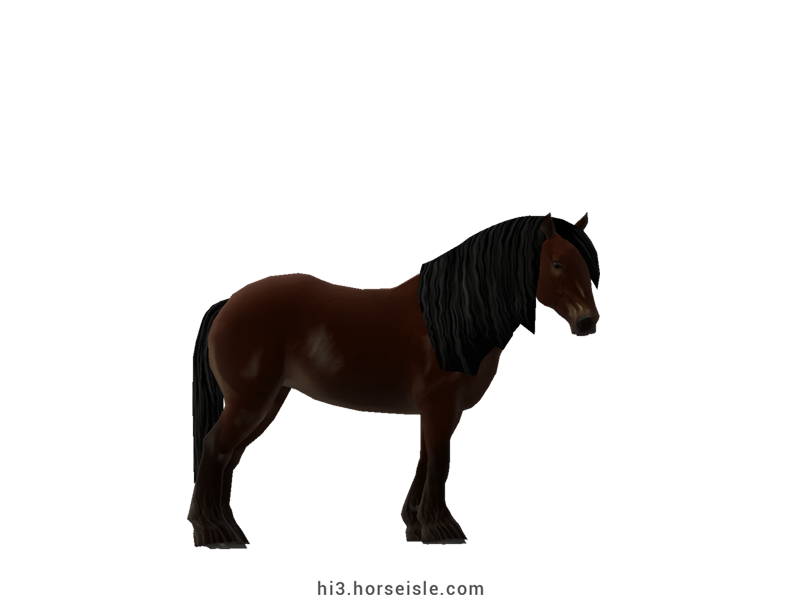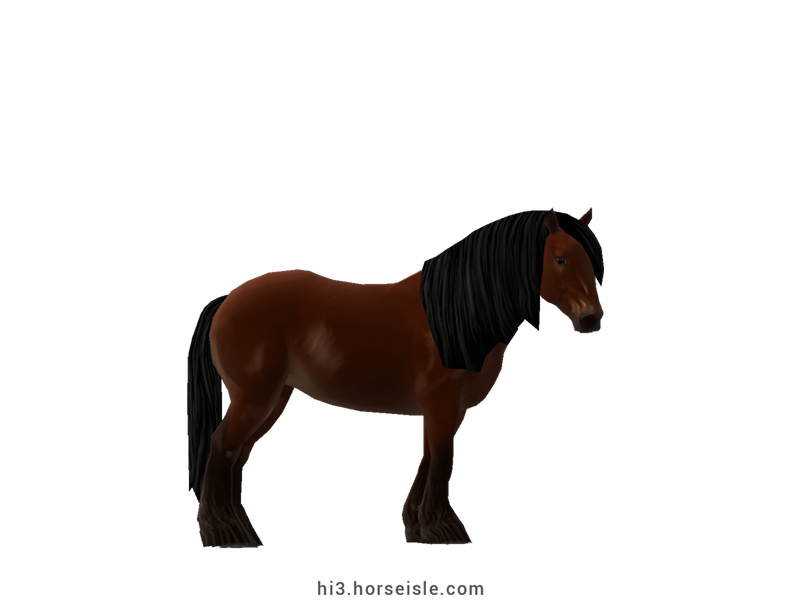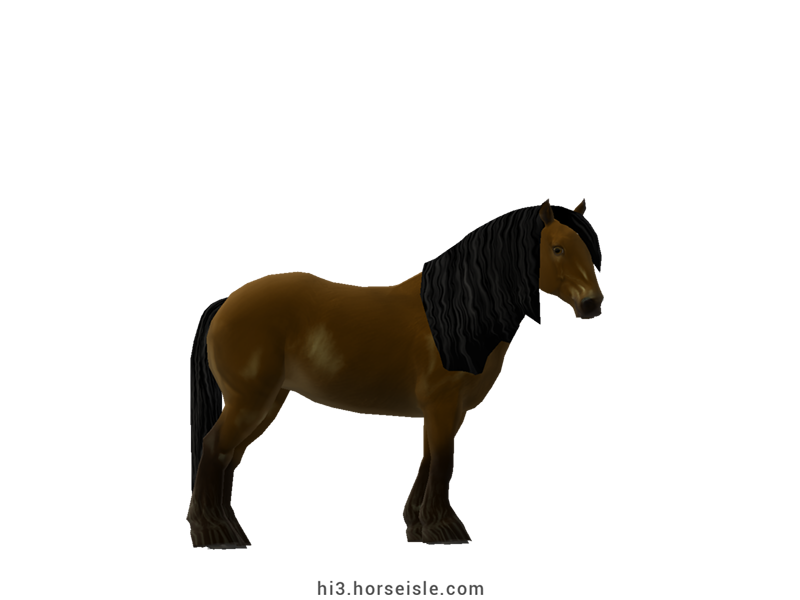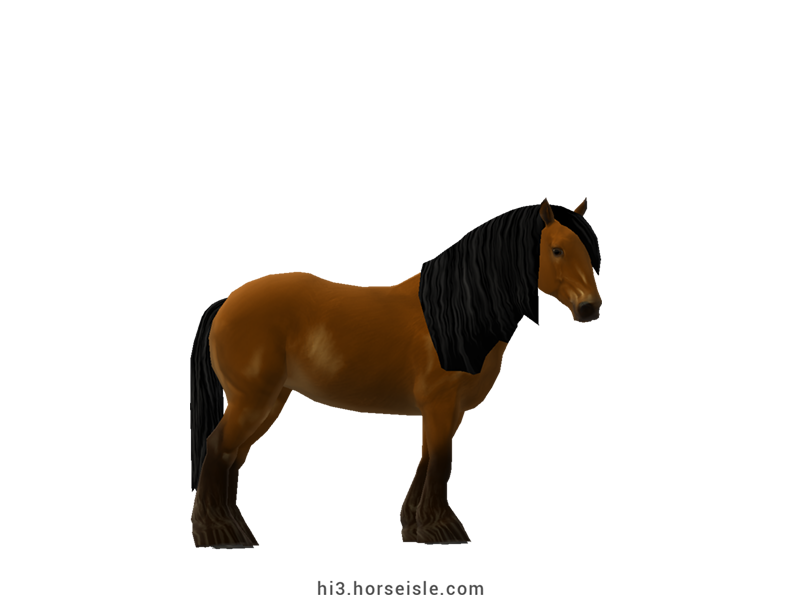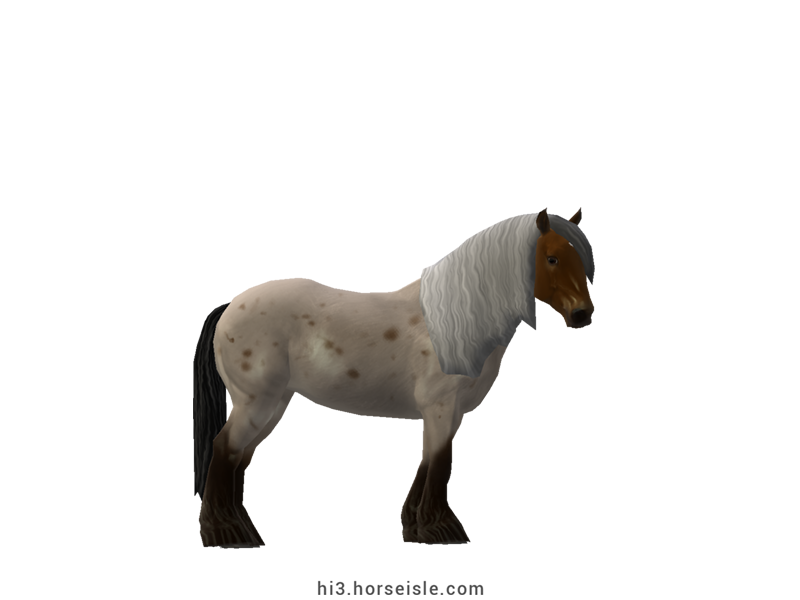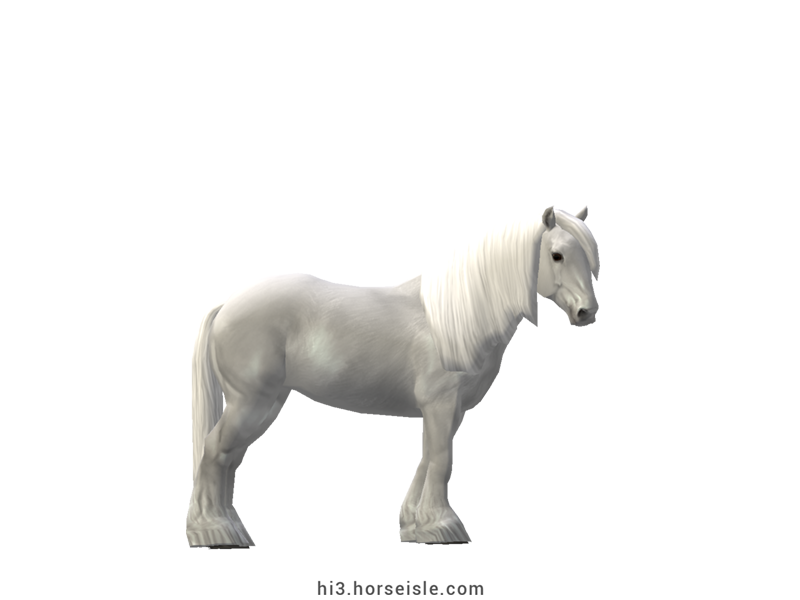Our Massive Real World Equine Reference!
[ INDEX ] Equine Type: Horse Breed: Dales Pony [ PREV ] [ NEXT ]
The ultimate pack pony of the Pennines:
During the 17th century, the lead mining industry flourished in the Pennine Chain in north England, and the workers relied on strong pack ponies to transport the lead. The job involved crossing rocky and hilly terrains while carrying heavy lead pigs over a distance of over a hundred miles. The ponies had to have great stamina, and be strong and sure-footed in order to withstand the difficult journey.
In order to create the ultimate pack pony, farmers in the Pennine region mixed local ponies with Scotch Galloway ponies which were known for their speed. By selecting and breeding only the strongest offspring, the farmers generated the ideal pack pony for the lead industry. This pony was the Dales Pony.
More than a pack pony:
Once the Dales Pony was created, its members gained popularity far beyond the lead industry. They were used in harness to transport carts with heavy loads and worked on farms as farm ponies. The latter became their primary job when the invention of trains rendered pack ponies redundant.
Under saddle, Dales Ponies were used for various types of riding, be it hunting, show-jumping, or even herding sheep.
A fast trotter:
Another important quality of the Dales Pony was its natural ability to trot quickly and smoothly. This ability was further refined during the 18th century, when Dales Ponies were crossed with various trotting breeds such as the Hackney. This added speed to the Dales breed without reducing its strength or stamina.
From that point, the Dales became more popular than ever, with people using Dales Ponies in trotting races in addition to using them as farm and riding ponies. The future of the Dales seemed bright, but then came the shadow of war.
From the farm to the military:
The strength and speed of the Dales Ponies made them excellent for the British army. The army used the ponies themselves as artillery ponies on the battlefield, while also crossing Dales mares with heavier horses (e.g. Clydesdale stallions) to produce vanners and gunners.
Originally, this was a blessing to the Dales, as it prompted breeders to breed more ponies in order to supply the demand. However, the widespread use and crossbreeding of Dales Ponies during both World Wars put the purebred Dales in jeopardy.
From the army to gaining Royal recognition:
Luckily, during World War II, a number of Dales Ponies were spared the fate of war and remained on the mainland where they worked on farms. Following the war, breeders took these ponies and tried to re-establish their breeding program, only to face a new struggle: the mechanization of agriculture during the late 1950s that rendered the Dales breed obsolete.
In 1964, the Dales Pony Society organized the breeding efforts by formulating a breed standard, and setting up formal inspections and registration policies. Thanks to all of these efforts, not only that the Dales Pony came back from the brink of extinction, but it also gained wider recognition throughout England. So much so, that fifty years later, in 2014, Prince Charles (which was back then His Royal Highness The Prince of Wales) agreed to be a Patron of the Society.
The Dales Pony today:
Today, the Dales is still rare but its future seems stable, with ponies being bred primarily in their homeland of Britain but also in the USA.
Dales Ponies are all-around ponies for both children and adults. They primarily serve for recreational riding, for anything from jumping to trekking. They also serve for driving, be it recreational driving or for driving competitions. Last, they also make good ponies for in-hand shows.
The Dales Pony - not a Fell nor a Friesian:
Until the 20th century, it was acceptable to cross Dales Ponies with Fell Ponies, and this led to the Dales Pony developing a similar appearance to that of the Fell Pony. That said, the two are separate breeds, with separate standards, and should be treated as such.
In addition, Dales Ponies might look like small Friesians, because they have similar feathering as well as long, thick, often wavy manes and tails. Don't let this similarity fool you, though, as these two breeds are unrelated and have vastly different conformation.
Conformation:
Dales Ponies have a deep and broad head with a straight profile and large eyes. The ears are small and sometimes curved inwards. The neck is muscular and long, with a round topline and a smooth connection to unobtrusive withers.
The body is compact and muscular, showing a short back, a broad chest, a deep girth, and muscular hindquarters. The legs are thick, especially at the joints, and the hooves are broad.
The mane and tails always grow long and can sometimes be wavy. The lower legs are covered with thick feathering that often covers most of their hooves.
Performance metrics:
The following are the: range, average, (SD), and MOE of performance metrics of ordered Dales Ponies in Horse Isle (not bred ones). In rare cases,
Speed: 14.4-15.6, 15 (0.2), 0.05.
Sprint: 48-58, 53 (2), 0.41.
Accel: 0.90-1.06, 0.98 (0.03), 0.01.
Decel: 0.96-1.10, 1.04 (0.03), 0.01.
Jump: 5.03-5.29, 5.17 (0.06), 0.01.
Pull: 2.43-2.94, 2.65 (0.11), 0.02.
Turning: 48.10-61.14, 55.05 (2.75), 0.54.
Reverse: 2.3-2.9, 2.6 (0.1), 0.02.
Stamina: 45.31-48.74, 47.15 (0.78), 0.15.
Reaction: 0.73-0.83, 0.78 (0.02), 0.00.
Coats & Height:
Coat: usually black, more rarely dark-bay ('brown'), grey, and roan. The coat is always solid, can be sooty, and usually lacks markings save for the occasional small star and/or snip.
No leg markings? real Dales Ponies can have markings on their hind fetlocks. Ponies with louder markings are ineligible for breeding.
In Horse Isle, markings on the hind legs don't occur naturally in the Dales due to technical reasons. You can try and breed ponies that have such markings, but keep in mind that too loud markings will carry a heavy penalty (up to 100%).
Height: 14hh to 14.2hh.
[ INDEX ] [ PREV ] [ NEXT ]

















